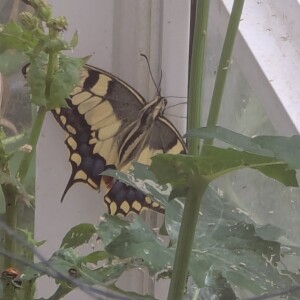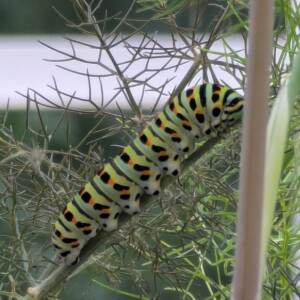Dreams
A crash course on swallowtail butterflies, which I never saw before today and knew nothing about. They used to be common in South-East England; now they are confined to the Norfolk Broads, where the caterpillars feed on milk-parsley growing on the margins of the water. Elsewhere, the European variant of the species may occasionally blow in during summer. These are more common on the European mainland and more catholic in their tastes, feeding on other Umbelliferae, like fennel, angelica and wild carrot
The British and European versions are classified as sub-species, whatever that means. Probably they are capable of interbreeding; probably that has happened for millennia; are they really all that distinct? Are their different feeding habits determined by genetics, the environment or some other factor? Might it be possible to re-introduce European swallowtail into Britain and rebuild the pooulation?
These are questions occupying the expert amateur enthusiast who has bred these individuals in a small domestic greenhouse and, to a slightly less obaessive extent, our friend who is well-informed about the inter-relationship between agriculture, wildlife and ecosystem management. They are trying to persuade the authorities to let them give it a try
I'm just a curious observer, entranced by the largest British butterfly. The main picture is a member of the swallowtail family but not actually the true British/Eurooean swallowtail (and look, no actual swallowtail). The inferior extra is the European true swallowtail and its equally beautiful caterpillar. I hope their efforts are successful



Comments
Sign in or get an account to comment.


